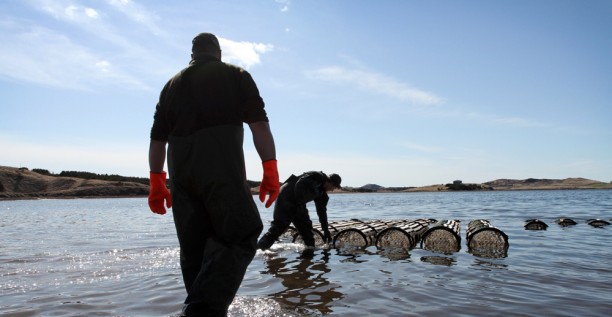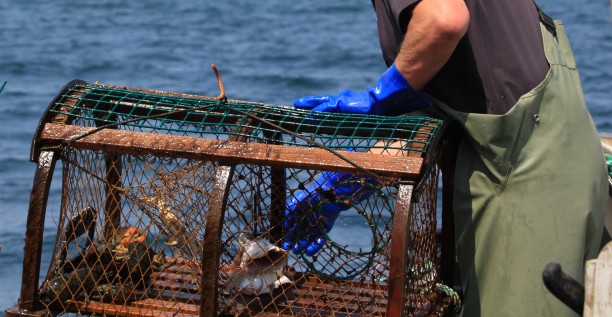


With the 149th lobster fishing season fast approaching, I took the time to talk about the necessary preparations for setting day with a local lobster fisherman who's about to start his 38th season. Here's what I've learned from this interview.
A few weeks before the big day, many fishermen get their traps out of winter storage to let them soak in the shallow bodies of water found here and there on the Magdalen Islands. Some only soak the new traps—according to older fishermen, the bubbling coming from the wood when the traps get soaked for the first time would scare off the lobsters. Pre-soaked traps also sink faster when tossed at sea for the first time of the season.

Once the wood has soaked up as much water as it will, the traps are taken out of the shallow waters one by one and brought to their designated spot on the wharf, behind the owner's boat. Each fisherman is allowed 273 traps, tied together in groups of seven with a length of rope ending with a marked buoy at both ends. The buoys make it easier to go back to the exact spot where the traps were set while also ensuring that different fishermen don't set their trawls—the groups of seven traps—on top of each other's. Those essential pieces of equipment make up the rigging, which is brought to the wharf along with the traps.

A few days before setting day, which is always a Saturday, the bait (called boette in French) is added to the traps—chunks of plaice, mackerel, herring, etc. Fishermen have many ways of sourcing bait: fishing for it themselves, buying it from other fishermen, etc. While adding bait to the traps, they tag them with the labels provided by Fisheries and Oceans Canada (DFO) and tie them into groups of seven. The traps are then loaded into the boats, after making sure that the engine and other equipment are all in working order. Since most boats are too small to carry all 273 traps, fishermen generally take two trips to set them at the start of the season.

On Friday afternoon, around 3 p.m., the DFO announces if the weather forecast is suitable for setting day to take place as scheduled on the following day. If too much wind is expected (anything above 20 knots), the launch is postponed, and the conditions are reassessed every hour. If the weather is good, fishermen can start prepping to head out at 5 a.m. on Saturday morning. During those last hours, they ponder where to set up their trawls.

On D-day, everyone is restless on the wharf from a very early hour. Fishermen tend to the final preparations, often accompanied by family members and friends who are present to witness the launch, wish everyone good luck or say a prayer to keep them safe at sea. At 5 a.m. on the dot, the signal is given and each boat leaves the wharf, one after the other, officially kicking off a new fishing season which, we hope, will bring record catch.